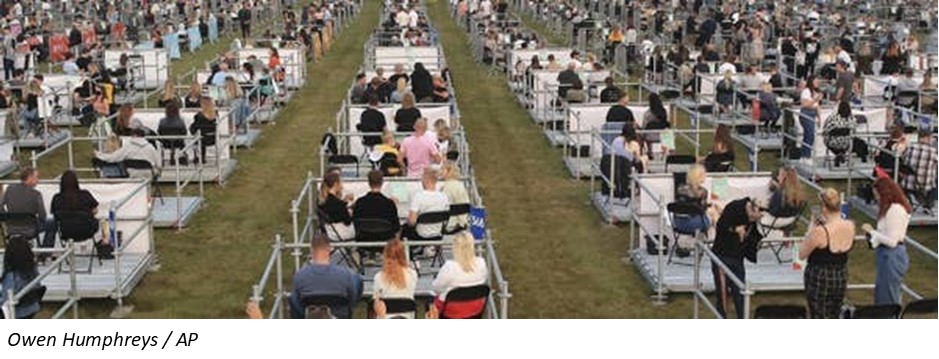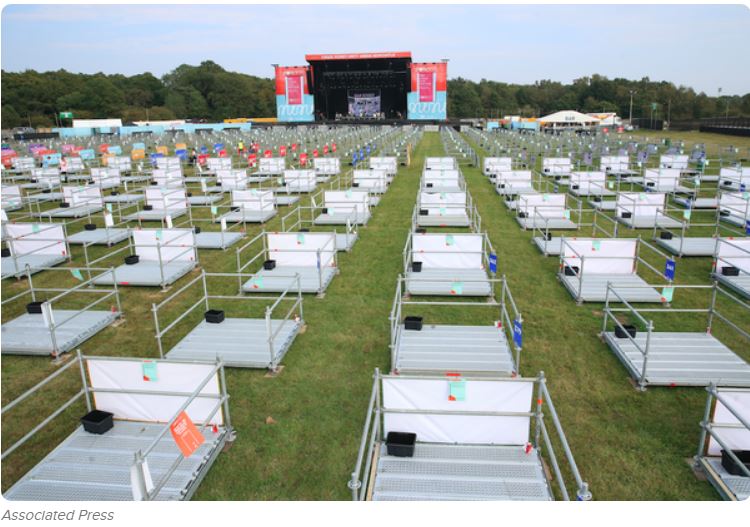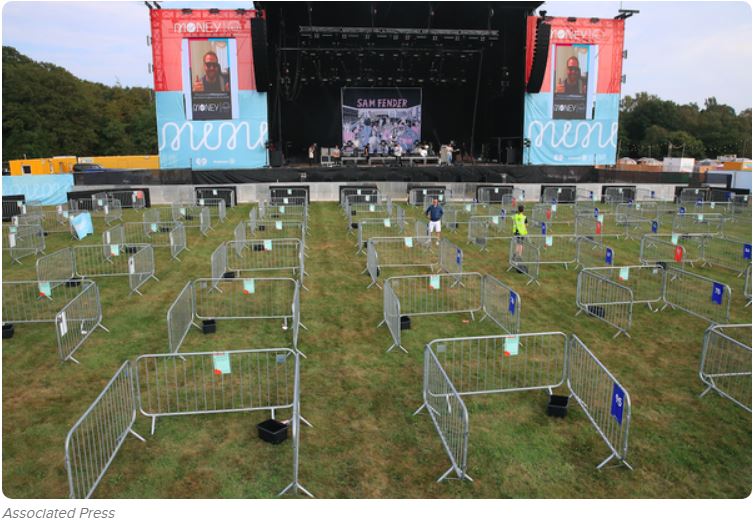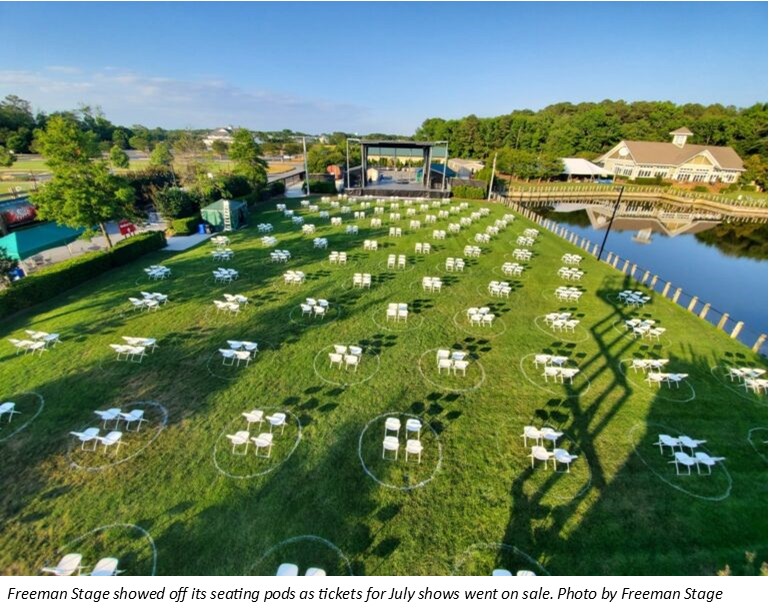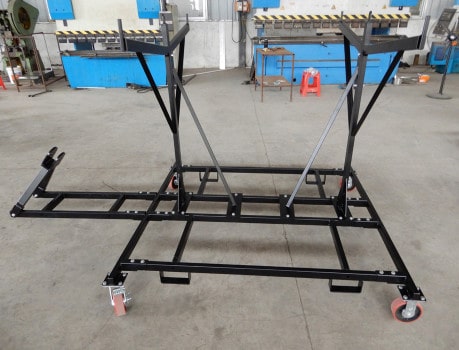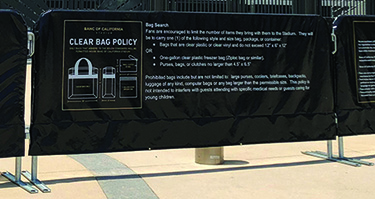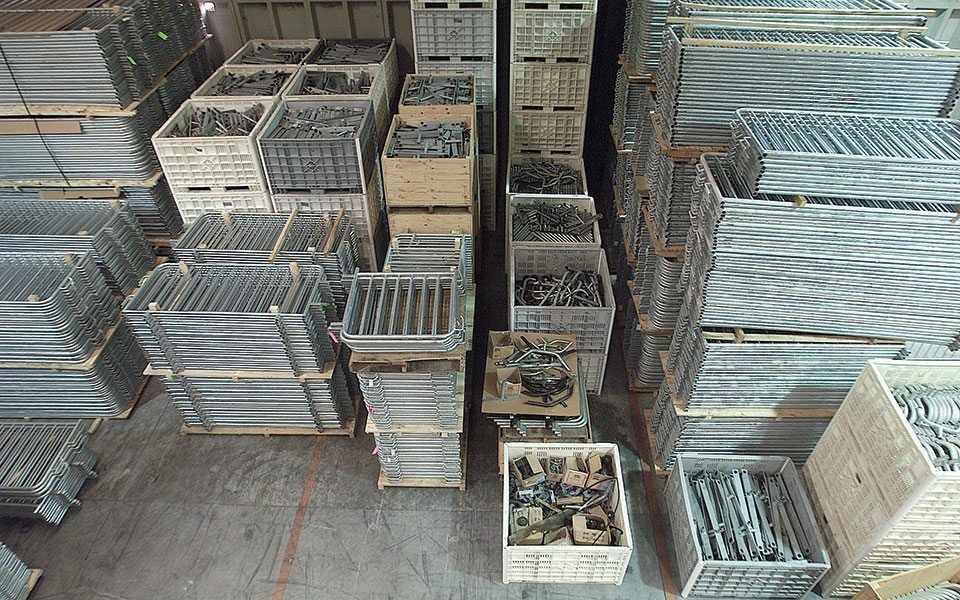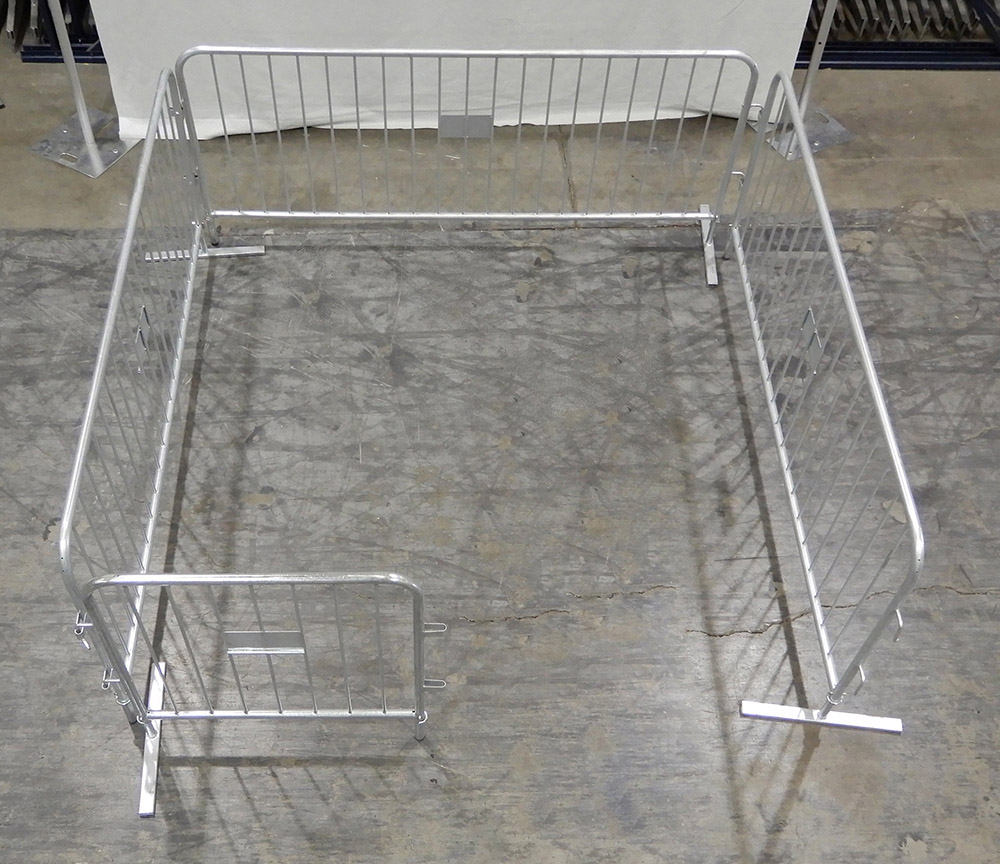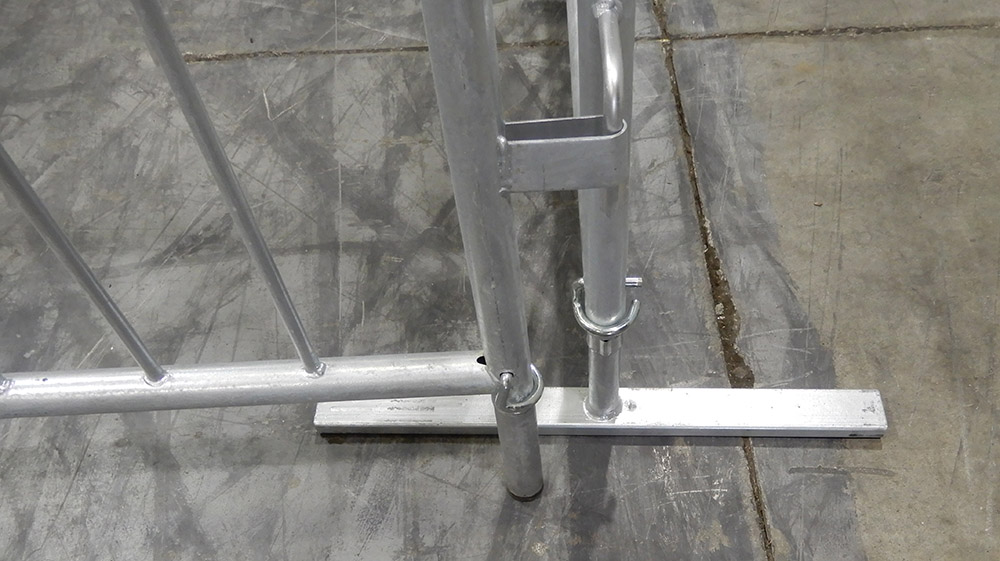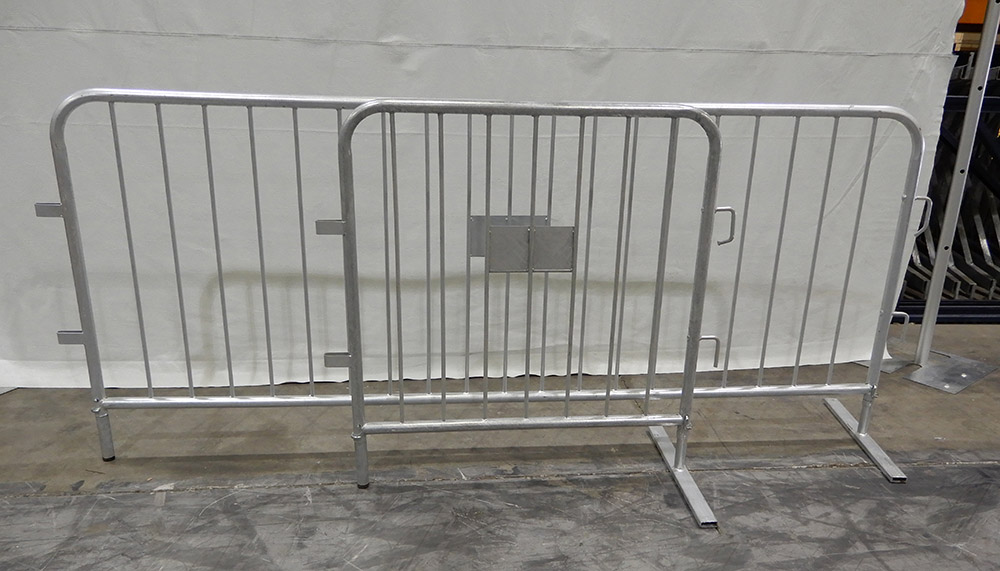A virtual concert is not a solution for the venue, (no revenue) nor does it give the patron the level of energy and excitement expected when viewing a favorite entertainer in person.
Some way must be found to reintroduce live concerts. So are PODS the answer?
When the Virgin Money Unity Arena in Newcastle, England decided to host the indie-rock act Sam Fender, it had to find a way to ensure a great experience while preventing the spread of COVID-19 through social distancing. Using its existing stock of steel barriers and scaffolding, it created separate “rooms “over the entire area, maximizing the number of guests it could accommodate in front of the stage.
The Arena proved it worked, opening up the possibility of hosting live concerts again. Setting up socially-distanced PODS allowed several thousand fans to be spread out in open venues. Now the concept is being duplicated in at least two US venues this month.
We discuss 20 questions related to the use of PODS below. As this is the first publication on their use, we encourage comments and suggestions so that we can provide an updated version of the use of PODS at venues. We’ll be referring to the Unity Arena concert as examples.
We welcome ideas and comments from venues that will allow us to update this article based on real-world experience over the season. Sharing experience with illustrations and comments in context will allow the event business to recoup some of the losses experienced this year.
20 Primary Questions on PODs
- What is a concert POD?
- Are concert venue PODS effective?
- What are the benefits of the concert POD to the attendees?
- What are the benefits of the concert POD to the venue?
- What are the disadvantages of my venue?
- Do I need a physical POD?
- Can I use markings to indicate the POD?
- How do I lay out PODs?
- Is using PODS cost-effective?
- What is the downside to using PODs?
- What do we do to get people into and out of the PODS safely, or even use to the toilets?
- Do we price by the person or by the POD?
- Should I price just the POD, or include other items such as chairs?
- What is my amphitheater is not flat?
- What if I don’t have enough steel barriers to use?
- Why might I prefer a Blockader over the other different steel barriers?
- Can I leave the PODS out from once concert to the next?
- How long does it take to set up these PODS compared to normal seating?
- Do patrons actually respect the POD boundaries?
- How do we assure compliance by attendees?
- What is a Concert POD?
It’s an individual space, created built with both steel barriers and scaffolding to create separated “rooms” spread over the entire area, maximizing the number of guests to be accommodated in front of the stage.
- Steel barriers were used for those who just wanted to stand and be closer to the stage.
- Scaffolding added for those who wanted to sit. These were placed further back and raised for a better sightline.
- Are Concert Venue PODS effective?
Despite bad jokes from the stage about it resembling a cattle market, the overall response from the fans was just as enthusiastic and as loud as the sardine-packed concerts of the past. It works.
- What are the benefits of the Concert POD to the Attendees?
Isolated PODS allow families and friends to congregate within the POD, without masks and without endangering others at the venue. Some equate the use of PODS to attending a drive-in movie, with a common center of attention, but still offering privacy in your own space.
- A mask isn’t required
- Your view isn’t blocked by a 7-foot tall person
- Even a 5 ft person can sit and still see the stage
- No one is spilling beverages on you
- You can smoke without disturbing others
- You aren’t being jostled by rowdy crowds or jammed up against other people
- Conflicts are less likely to require security
- What are the benefits of the Concert POD to the venue?
- It gets the venue back to hosting events by providing islands of social-distanced small groups.
- A POD can raise the per-capita spend.
- Minimal, upfront, out-of-pocket expense since every stadium and concert venue in North America has some variation of the steel bike rack and other line delineators.
- Steel barriers minimize turf damage
- It’s a better way to control trash, cutting down on the cleanup time.
- What are the disadvantages to my venue?
- It’s a new concept so there aren’t a lot of rules and guidelines. The logistics will evolve and improve over time.
- The number of attendees is limited so it’s financially challenging for the organizers.
- To assure fan enjoyment, and to maximize revenue, every venue will need to calculate the total space available with stage viewing.
- Do I need a physical POD?
A physical POD is probably the best option, especially since every stadium and concert venue in North America has some variation of steel bike racks in inventory. Steel barriers, along with scaffolding, have been used successfully in England. Another option would be plastic landscape posts connected by a plastic chain, or even belted posts (if they are weatherized).
- Can I use ground markings to indicate the POD?
You can define each POD with chalk. However, chalk builds up over time and slows down water movement to a grass plant’s root structure. It also washes away or is blown away in the wind.
You might try painting the lines. Refer to this article for more details.
- How do I lay out PODS?
The objective is to maximize the number of PODS that can be sold with a view of the stage. That means applying new criteria determined by the kind of guests and type of act presented. Use your past experience as the only real difference is the number of patrons grouped now into PODS, instead of standing corrals. All the other safety and movement requirements still apply.
- Is the use of PODS cost-effective?
Of course, fewer patrons mean less revenue but, at this stage, everyone should be working to keep the public going to venues, or at least knowing that the venues continue to exist. That means the artist, the city, the management company, the unions, everyone must understand that they must sacrifice a little now to be sure they exist and have a future in our industry.
On the other hand, if done right, the experience for those who do attend can be such that the individual spend can be significantly higher than normal to help offset the additional cost of social distancing.
- What is the downside to using PODS?
Setting up and tearing down can be labor-intensive. Unless events are held back-to-back, the PODS must be set up and taken down with every concert. That means loading onto some type of transport and moving them off the field. If they can’t be stored on that transport, someone would have to unload and reload them with each use, perhaps needing extra labor.
There are of course storage carts for all the items that delineate a POD, including the steel barriers and plastic posts.
- What do we do to get people into and out of the PODS safely, or even to use the toilets?
Clearly new rules and behaviors will be required. Touchless payments if you have a gate; groups must arrive and go to their POD as a group; no stragglers. Use of masks entering and leaving the venue, or when leaving the POD for refreshments or the toilet. The utilization of barrier jackets could be used to display custom messaging.
- Do we price by the person or by the POD?
The best way is to price the POD. It forces one person to commit to the group, requiring one person to be a single payment. If people want chairs other amenities include those in the price of the POD.
- Should I price just the POD, or include other items such as chairs?
It’s important to minimize the interaction of staff with the patrons in the PODS; having an all-included price not only minimizes the detailed work, but it also expedites the setup and breakdown for the staff. It also helps that it’s a better experience for the patron.
- What if my amphitheater is not flat?
In that case, you will likely need height adjustable scaffolding to create the PODS, at least in the back of the viewing area. Although more costly than a simple perimeter, it has the advantage of keeping chair legs and feet off the turf minimizing cost to grounds keeping.
- What if I don’t have enough steel barriers to use?
Blockader has the largest inventory in North America to fill out shortages of frames, bases, and corner inserts to minimize any additional expense.
- Why might I prefer a Blockader over the many other different steel barriers?
Its unique 3-way interlock keeps the PODS connected and still allows them to create separation distances for one-way traffic and emergency egress.
Originally designed for use by police and security, it can help maintain proper distancing between PODS that use steel barriers.
- Can I leave the PODS out from one concert to the next?
That depends on the weather. Will it survive wind and rain?
- How long does it take to set up these PODS compared to normal seating?
If PODS are composed of steel barriers, just as with the chairs and tables, Steel Barrier carts can move small and large groups of barriers to specific locations, quickly and efficiently, eliminating the slippage so often encountered with forklifts.
- Do patrons actually respect the POD boundaries?
If there is any way to expand the boundary, someone will try to do it. Your 8-foot POD will expand to 8 1/2, then to 9, etc. A few might be tolerated but what frequently happens, is that neighboring PODS will emulate this. If not controlled, the POD perimeters start to merge with others, creating multiple problems.
- How do we ensure compliance with attendees?
The Broadberry Entertainment Group has published a good list of rules utilizing the POD concept for Keller Williams at the Bon Secours Training Center. These 17 rules should be applicable to just about everyone at this time. We are listing it below because we feel they both understand the concept and have anticipated where things might go astray.
The challenge, of course, is getting the patrons to read it.
“In order to provide the safest and best POD-Seating Concert Experience, we require each participant to observe the following rules:
-If you are sick, running a fever, or have been exposed to COVID-19, please stay home until you are healthy.
-PODS are capped at 4 or 6 people, depending on your ticket. All concertgoers that will be within a single POD MUST ARRIVE AT THE SAME TIME. A 4-person POD is 9’x9′. A 6-person POD is 14’x14′. There is 6′ of space (left to right) between all PODS. There are 10′ walkways in front of and behind each POD. All walkways are ONE WAY ONLY.
-Arrive early! PODS in each section are first come, first served.
Read about your POD options with Blockader here…
Blockader is the oldest continuous supplier of steel barricades in North America. We have the largest inventory and selection of models in the industry.
It seems every metal bender in China also makes frames and variations and, for PODS, almost all of them will work.
Below is a simple Blockader POD using the Standard frames with the carry handle. It can make an efficient POD in either 8 ft (2.5 M) or 6 ½ ft (2 M) squares, with a single 1M in the back for easy entry and exit.
The premium Classic Blockader, preferred by Boston, Chicago, and San Francisco, can also be so configured.
Unlike the bridge base that pivots within itself so all points touch the ground for stability, all flat bases must ride up over the other in corners, regardless of supplier.
Blockader has rubber tipped inserts that allow full stability on corners.
If all you need is a few inserts, we can supply them relatively inexpensively.
Similarly, if all you need is a few shorter gates for the back, we can also supply those. Both Classics and Standards are in inventory ready to ship.
One unusual benefit to the Blockader is the 3-way interlock. What this means is that you can attach two frames to the same receiver without the need for tie-wraps or tape or rope.
A practical use could be using the extra barrier to designate a fixed distance between PODS and, at the same time, designate one-way traffic aisles and emergency egress. Traditionally, police use two lines of steel barriers to create a no man’s zone and use the 3 way to keep the two lines of steel barriers apart.
Here is a link explaining the concept.
If we can help round out any inventory needs, give us a call. We also have stock compatible with some of the orphan variations sold over the years. Ask about our carts for transporting barriers from one location to another.
